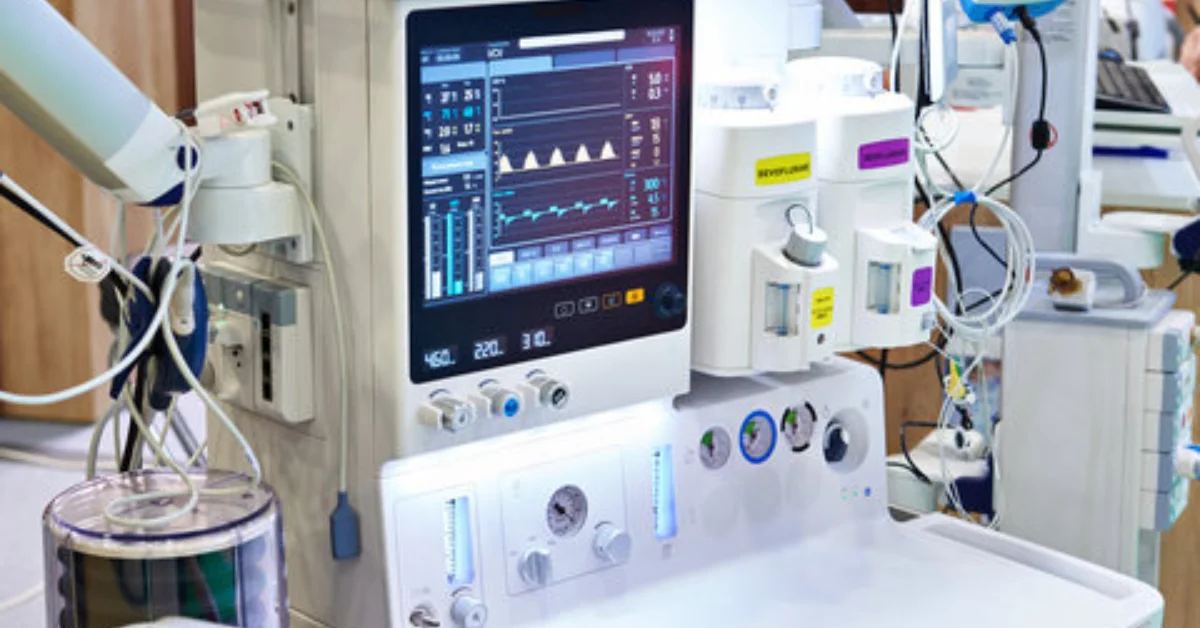In the intricate world of healthcare, the role of anesthesia machines is paramount. These devices, ensuring patient comfort and safety during medical procedures, require careful consideration before purchase. In this guide, we’ll explore How to Buy Anesthesia Machines and the vital factors to contemplate, instilling confidence in healthcare professionals aiming to acquire these indispensable tools.
This blog post is your compass, navigating the intricacies of selecting the ideal anesthesia machine for your facility. We’ll dispel anxieties, unveil hidden gems, and empower you to make a confident, informed decision. So, fasten your seatbelts and explore the exciting world of anesthesia machines!
- Understanding Anesthesia Machines
- Understanding Your Needs
- New vs. Refurbished: A Duet of Options
- Essential Features: The Instruments of Your Symphony
- Choosing the Right Vendor: Finding Your Musical Director
- Regulatory Compliance
- Setting a Budget
- Researching Suppliers and Brands
- Features and Specifications
- Requesting Demos and Evaluations
- Service and Support
- Warranty and Documentation
- Ordering Process
- Installation and Training
- Staying Informed
- Final Words
Understanding Anesthesia Machines
Anesthesia machines, often the unsung heroes in the operating room, play a pivotal role in administering anesthesia and facilitating surgical procedures. These sophisticated devices comprise various components, each contributing to seamless patient care. Understanding these intricacies is the first step toward making an informed purchase.
In essence, an anesthesia machine serves as a life-support system, regulating the delivery of anesthetic gases and ensuring the patient’s physiological parameters remain stable throughout the procedure. Familiarizing oneself with the functionalities and components, such as vaporizers, breathing circuits, and gas delivery systems, sets the foundation for a successful procurement process.
Understanding Your Needs
Every symphony needs a conductor, and in this case, it’s you. Before stepping into the showroom, define your orchestra – the procedures you perform, your patient volume, and your budgetary baton. Do you orchestrate intricate cardiac concertos or lighthearted outpatient encores? Does your theatre host a bustling philharmonic or a cozy chamber ensemble? Each note dictates the features you’ll need.
High-volume facilities, like the vibrant opera houses, require robust machines with advanced ventilation and monitoring capabilities. For serene outpatient clinics, streamlined, portable models might be the perfect harmony. Remember, budget is your first violinist – balance affordability and functionality.
New vs. Refurbished: A Duet of Options
Now, the melody shifts. Should you invest in a brand-new masterpiece or consider a refurbished gem? Both options have their charm. New machines, like freshly printed sheet music, boast cutting-edge technology and pristine warranties. Refurbished models, lovingly restored by skilled technicians, offer remarkable value and potential cost savings.
Remember, refurbished doesn’t mean “second-hand.” Look for machines certified by reputable bodies like the FDA, with comprehensive service histories and strong warranty options. It’s like finding a vintage Stradivarius, meticulously restored, ready to serenade for years to come.
Essential Features: The Instruments of Your Symphony
The heart of your machine lies in its features, the instruments that bring your vision to life. Let’s tune in to some key players:
- Ventilation: The maestro of breath, your machine should offer diverse ventilation modes (controlled, assisted, etc.) and advanced options like pressure support for even the most delicate arias.
- Monitoring: Keep your finger on the pulse with comprehensive patient vital signs and anesthetic gas concentration monitoring. Like a vigilant conductor, watch every note, ensuring patient safety and surgical success.
- Waste Gas Scavenging: Protect your team and the environment with a robust waste gas scavenging system. It’s like the backstage crew, quietly whisking away unwanted notes, keeping the atmosphere clear and healthy.
- Mobility and Portability: Does your performance demand flexibility? Consider cart-mounted machines for effortless movement within the theatre. For dedicated operating rooms, stationary models might be the perfect fit.
- Ease of Use: A user-friendly interface is like intuitive sheet music. Look for machines with clear displays, logical controls, and readily available training resources. Remember, even the most virtuoso surgeons need practice on a new instrument.
Choosing the Right Vendor: Finding Your Musical Director
With your musical vision clear, it’s time to find the perfect orchestra conductor – your vendor. Look for established names like GE Healthcare, Dräger, Mindray, Penlon, and Getinge, brands that have earned their place on the world stage. Consider these factors:
- Experience and Reputation: Choose a vendor with a proven track record of delivering reliable machines and exceptional customer service. Think of them as the seasoned music director, guiding you through every note with confidence.
- Service and Support: Imagine encountering a technical hiccup mid-performance. A strong service network with readily available technicians and parts is like a well-rehearsed backup orchestra, ensuring a smooth flow even when unexpected notes arise.
- Get Quotes and Compare: Don’t settle for the first melody you hear. Gather quotes from multiple vendors, comparing prices, features, and service packages. Remember, the best music is often born from careful collaboration.
Regulatory Compliance
In the ever-evolving landscape of healthcare regulations, adherence to standards is non-negotiable. This chapter delves into the importance of complying with local and international regulations, emphasizing the certifications and standards that signify a commitment to patient safety and quality care.
Entities like healthcare facilities, governed by regulatory standards, must prioritize the acquisition of anesthesia machines that meet or exceed these benchmarks. By doing so, professionals not only ensure legal compliance but also contribute to the overall reputation and trustworthiness of their institution.
Setting a Budget
Budget considerations in the realm of medical equipment are a delicate balance. While cost-effectiveness is crucial, compromising on quality can have serious repercussions. This chapter navigates the nuances of budgeting for anesthesia machine purchases, offering insights into finding that sweet spot where affordability meets reliability.
Understanding the total cost of ownership, encompassing not just the initial purchase price but also maintenance and potential upgrades, enables healthcare professionals to make financially prudent decisions. In the pursuit of budgetary balance, there should be no compromise on patient safety and care quality.
Researching Suppliers and Brands
Selecting reputable suppliers and established brands is akin to laying a sturdy foundation. This chapter provides a roadmap for identifying trustworthy partners in the procurement journey. The reputations of both suppliers and manufacturers play a crucial role in determining the reliability of the anesthesia machines they offer.
Entities such as medical equipment suppliers, with proven track records, instill confidence in healthcare professionals. Through a thorough examination of brands and suppliers, one can build a procurement strategy grounded in reliability and longevity.
Features and Specifications
As the heart of the operating room, anesthesia machines come with a plethora of features and specifications. This chapter delves into the intricacies of these features, exploring ventilation modes, monitoring capabilities, and safety features. By gaining a nuanced understanding of these aspects, healthcare professionals can align the machine’s capabilities with the specific needs of their practice.
Entities like ventilator technology and gas delivery systems take center stage, influencing the overall functionality and performance of the anesthesia machine. This section acts as a guide, ensuring that professionals select machines that seamlessly integrate with their existing infrastructure and enhance patient care.
Requesting Demos and Evaluations
In the world of medical equipment, experiencing is believing. This chapter underscores the importance of hands-on experience before making a purchase. By providing tips for requesting demonstrations or trial periods, healthcare professionals can assess the practicality and usability of potential anesthesia machines.
The value of witnessing the machine in action cannot be overstated. This step, often overlooked, bridges the gap between theoretical understanding and practical application, instilling confidence in the chosen equipment’s performance.
Service and Support
Anesthesia machines are not just a one-time purchase; they are long-term investments in patient care. This chapter emphasizes the critical role of service and support in ensuring the continued reliability and functionality of the equipment. Access to technical support, comprehensive training, and maintenance services are non-negotiable elements of a successful procurement strategy.
Entities such as medical equipment suppliers, committed to providing robust after-sales support, contribute significantly to the overall success and longevity of anesthesia machines in healthcare facilities. This chapter serves as a guide for professionals to navigate the landscape of service and support options.
Warranty and Documentation
The assurance of a solid warranty is akin to a safety net in the fast-paced world of healthcare. This chapter breaks down the intricacies of warranty terms and conditions, highlighting their significance in protecting the investment. Comprehensive documentation and certification further contribute to the overall transparency and reliability of the anesthesia machine.
Entities like regulatory standards and equipment warranty play a crucial role in instilling confidence in both healthcare professionals and patients. By understanding and demanding clear documentation and warranty terms, professionals safeguard their practice against unforeseen challenges.
Ordering Process
Initiating the purchase of anesthesia machines involves a systematic approach. This chapter serves as a step-by-step guide, outlining the ordering process, payment terms, shipping details, and delivery timelines. By streamlining the procurement process, healthcare professionals can navigate the complexities of acquiring and integrating new equipment seamlessly.
Entities like healthcare facilities and medical equipment suppliers work in tandem during this process, ensuring a smooth transition from order placement to equipment installation. This chapter acts as a beacon, guiding professionals through the labyrinth of procurement logistics.
Installation and Training
The journey doesn’t end with the delivery of anesthesia machines; it begins anew with installation and training. This chapter focuses on the meticulous planning required for installing these devices in the healthcare facility. Equally important is ensuring that the staff receives comprehensive training on usage and maintenance, guaranteeing optimal performance and patient safety.
Entities such as operating room management and healthcare facility equipment become key players in this phase, ensuring the seamless integration of new equipment into existing workflows. By prioritizing proper installation and training, healthcare professionals lay the groundwork for a successful and efficient operating environment.
Staying Informed
In the dynamic field of healthcare, staying informed is not just a recommendation; it’s a necessity. This chapter encourages healthcare professionals to adopt a proactive approach, continuously monitoring updates, recalls, and industry developments. By staying ahead of the curve, professionals safeguard their practice against unforeseen challenges and contribute to improving patient care.
Entities like regulatory standards and anesthesia machine brands play pivotal roles in this ongoing process of staying informed. By collaborating with reputable partners and remaining vigilant, healthcare professionals position themselves as leaders in their field.
Final Words
As we conclude this comprehensive guide on How to Buy Anesthesia Machines, it’s imperative to reflect on the journey. We’ve navigated the intricacies of understanding these vital medical devices, assessing facility needs, ensuring regulatory compliance, and making informed decisions on budgets, suppliers, and features.
From the initial stages of research to the hands-on experience of demos, and from the critical phases of service and support to the ongoing commitment of staying informed, each step contributes to the overarching goal: providing optimal patient care. By embracing the insights shared in this guide, healthcare professionals are empowered to make decisions that resonate with reliability, safety, and efficiency.
In the world of healthcare, where every decision directly impacts lives, the acquisition of anesthesia machines is not merely a transaction; it’s a commitment to excellence. As you embark on this journey, may your choices be guided by the principles of patient safety, technological innovation, and a steadfast dedication to advancing the field of healthcare.



